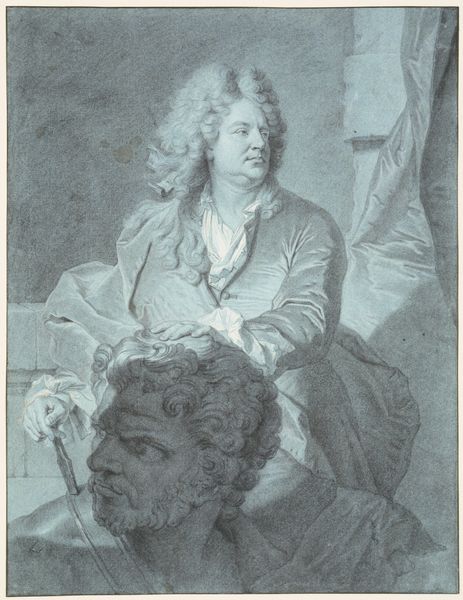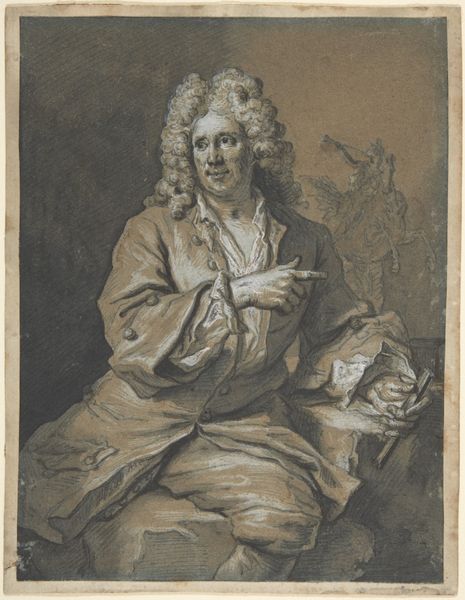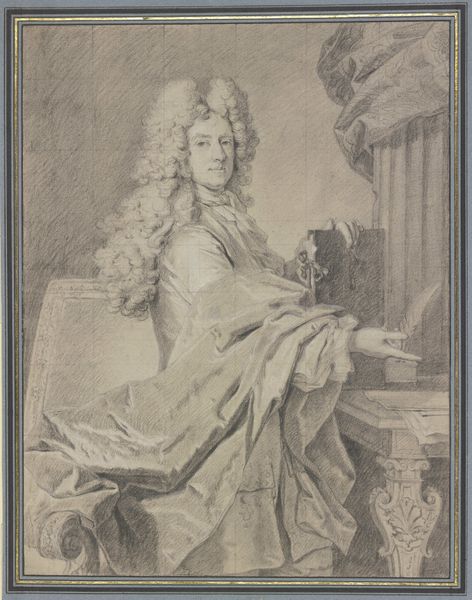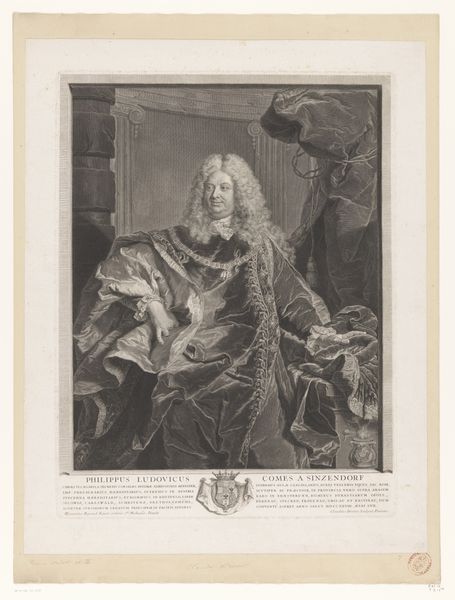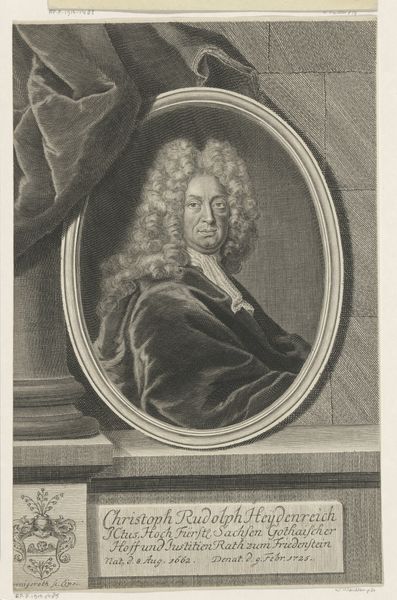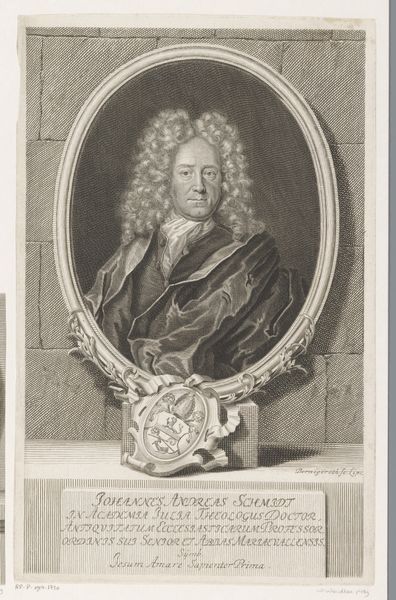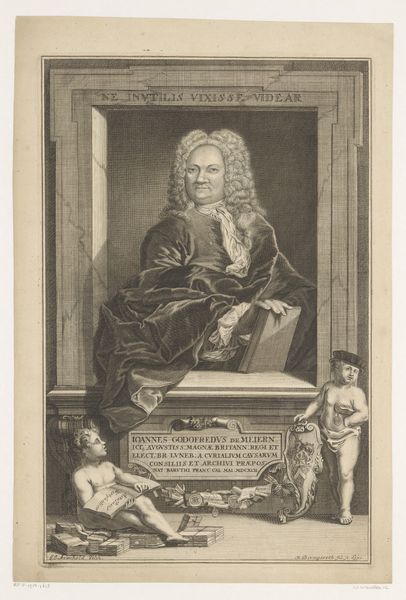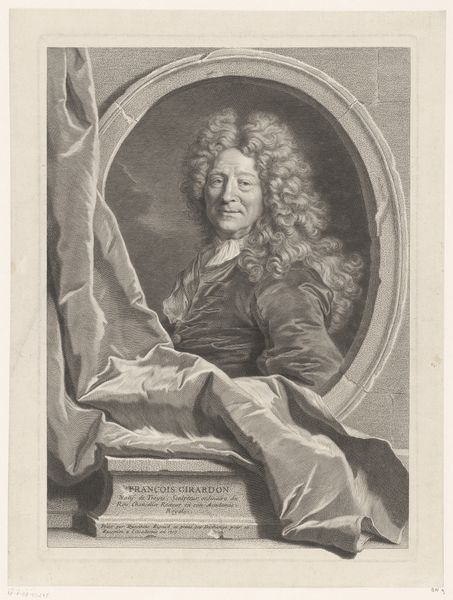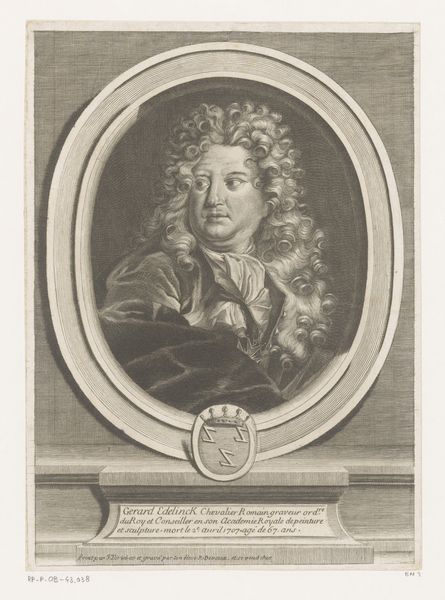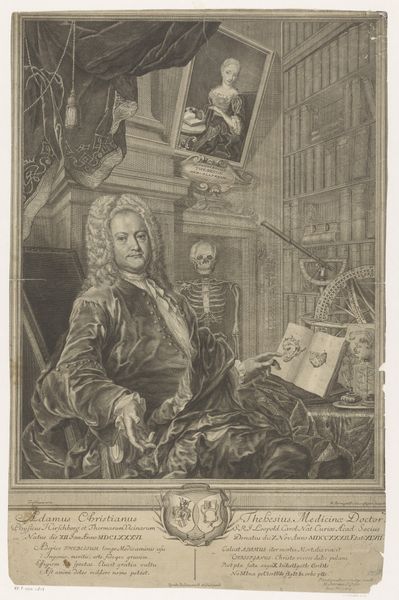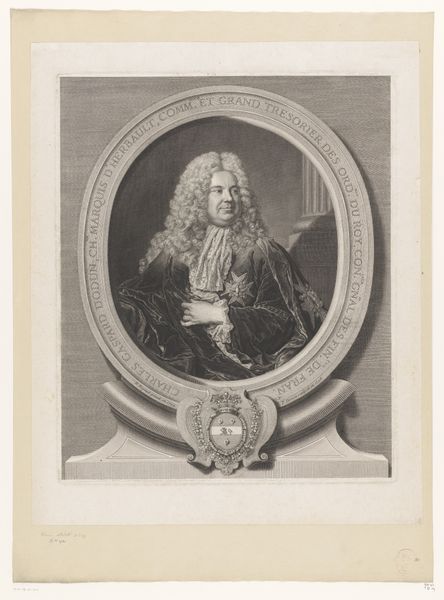
print, metal, engraving
#
portrait
#
baroque
# print
#
metal
#
old engraving style
#
portrait drawing
#
history-painting
#
academic-art
#
engraving
Copyright: National Gallery of Art: CC0 1.0
Curator: This is a portrait of Nicolas Coustou, rendered in 1730 in an engraving by Charles Dupuis. Coustou was a sculptor attached to the French Royal Academy. Editor: What strikes me first is the stillness, despite the subject appearing to be in the middle of creating. It’s all so meticulous—the curl of the wig, the folds in the satin, the delicate use of hatching to define the marble. There's an intimacy in this scene; I feel as if I am intruding on his creative process, as if stepping into his studio. Curator: Yes, and Dupuis uses the portrait to showcase Coustou’s standing as a sculptor and his association with the Academy. He is shown with a hammer, adding details to a bust. We also notice architectural details in the background which reinforce this visual association. This is no candid shot, but an artist's well crafted statement. Editor: Right, and what I find captivating is that this piece is about creation as much as it is about portrayal. The light catches the planes of both Coustou’s face and the sculpture. You feel a certain weight and texture from the material—Dupuis managed to trick my eye, almost! It calls into question what exactly defines sculpture—it really captures the dynamism and vitality inherent in baroque aesthetics, and the interplay between model, sculptor and artwork. Curator: I would say the technique has more to do with history painting and academic art! Think about how portraiture and engraving circulated these official images and perpetuated ideals in eighteenth century France. Look at the clear depiction, the details within the face, the gaze… it does indeed come across more as official. The visual elements speak to larger cultural narratives surrounding talent, status and creative enterprise. Editor: You’re right. Considering the formal pose and the details of his status rendered beneath the image—his place of birth, his roles with the Royal Academy… So the engraving itself performs an administrative function. I must remember that. Curator: We always do. Editor: Fair enough. It’s hard not to marvel at how art allows us to keep perceiving historical narratives that may be long gone—almost like exhuming echoes from our past.
Comments
No comments
Be the first to comment and join the conversation on the ultimate creative platform.
